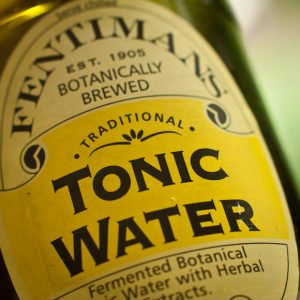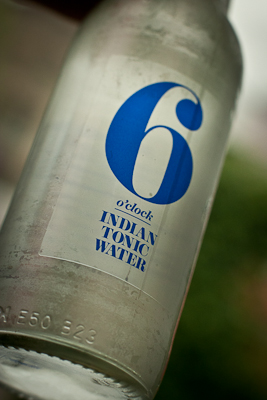
‘So, Tom,’ Elaine asked softly, ‘how high is your pain threshold?’
Elaine is, it turns out, very, very strong.
10 minutes later, I am face down with Elaine’s elbow in my back, wimpering like a child.
Elaine grew up in Redditch. I learnt to drive in Redditch. There are lots of roundabouts in Redditch.
My driving teacher, a luxuriantly mulleted old love called Jerry, used to pick me up at the school gates, the strains of The Phantom of the Opera booming from his tiny Peugeot.
Our mutual love of music previously (alas) affirmed, Jerry was eager to know my opinion of Andrew Lloyd-Webber’s seminal work.
I, conversely, was eager to get the fuck out of the school car park. But Jerry wanted me to practise a three-point turn.
Calmly. Carefully. Slowly.
‘…The Phantom of the Opera is there!
Inside my mind.’
Oh, please, Christ, it’s going to be break-time in three minutes.
There is a kind of theme, here. Have you noticed that? It has to do with me being helpless, vulnerable, and yet almost impossibly heroic in the face of danger.
‘Are you doing alright there, Tom?’ asks Elaine.
My hearty reply is undermined as my voice cracks pubescently. I hope that this laryngeal betrayal is muffled by the towel pressed hard across my face. But I’m pretty sure it isn’t.
So. I need to relax.
‘With 90% of the people who come here,’ says Elaine, conversationally, ‘I start on the back then, when that’s done, I go down to the legs. You’re not going to be in that 90%.’
Her tone of voice isn’t menacing. I don’t think she intends this as a threat.
At some point I start burbling manically about pyjamas. This happens increasingly often, these days. This time, though, I keep having to pause, mid-sentence, in a way that is, frankly, entirely lacking in rhetorical justification. The pauses are my only bulwark against a bellowing Parn-howl like that of a bear with its testicles snagged on a barbed wire fence.
And, as bulwarks go, the pauses (right now) feel pretty fragile.
‘… My power over you / Grows stronger yet…’
Briefly, I contemplate the possibility that my life may be flashing before my eyes.
Elaine likes pyjamas. (I also like pyjamas.) She is mildly perplexed at the idea of a dressing gown more expensive than her car. And she is probably right to be perplexed. From my vantage point, the concept of ‘luxury’ has, over the past hour, been rather dramatically redefined simply to denote any experience not involving an elbow in one’s back.
I guess that explains, then, why I hobbled out of that massage and immediately bulk-booked five more. Because what’s an hour of pain and humiliation when the rest of the week suddenly seems, by contrast, like glorious liberation? The Upper Richmond Road has seldom seemed more gold-paved.
And that’s why you should trust absolutely nothing I’m about to write about the bottle of Macon-Villages from Domaine Talmard that I cracked open afterwards. Because, frankly, after all that, I could probably be drinking the bottled contents of a pub urinal in Croydon and still find something positive to say about the experience.
(Well. Okay. Maybe not Croydon.)
So here’s what happens when you drink a half-bottle of Domaine Talmard after a massage from Elaine — your body smugly freed of toxins, your conception of luxury redefined.
You notice, first off, that Domaine Talmard smells a whole lot of apples. Like old, English apples that’ve been sitting around for a bit too long in a crumpled paper bag in the sun.
When you raise the glass to your gob, you experience an electric jolt of pain across your upper back, and your eyelid starts to twitch madly.
But it was worth it. Because it tastes pretty damn nice. Principally, it tastes of toxins. Sweet, delicious toxins. Welcome back to my bloodstream, toxins. I’ve missed you. You and me, toxins, we were a team. I should never have thought otherwise. We belong together.
‘Floating, falling, sweet intoxication
Touch me, trust me, savor each sensation…’
Lazy, perfumed lemon and (yes) those apples, and a bracingly serrated edge of bitterness. And, in your slavering, toxin-thirsty gob, it feels intoxicatingly plump.
Domaine Talmard, you see, didn’t ask me about my pain threshold. Innocent in its demure half-bottle, it just sort of shuffled up close and lent on me a bit. And (unlike that fucking weirdo on the Tube the other day) Domaine Talmard is quite welcome to do that.
But I’ll be going back to Elaine next week.
Because comfortable, snuggly Chardonnay is all very well. But nothing’s going to be quite the same any more.
‘The Phantom of the Opera is there
Inside my mind.’
Wine Macon-Villages, Domaine Talmard, 2011
Grape Chardonnay
Price £5.75 for a half bottle from
The Wine Society


















